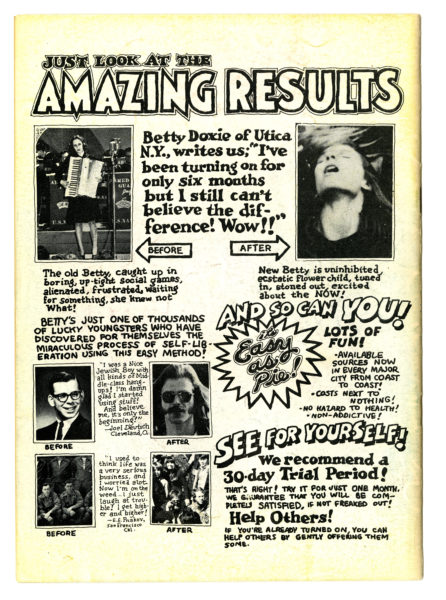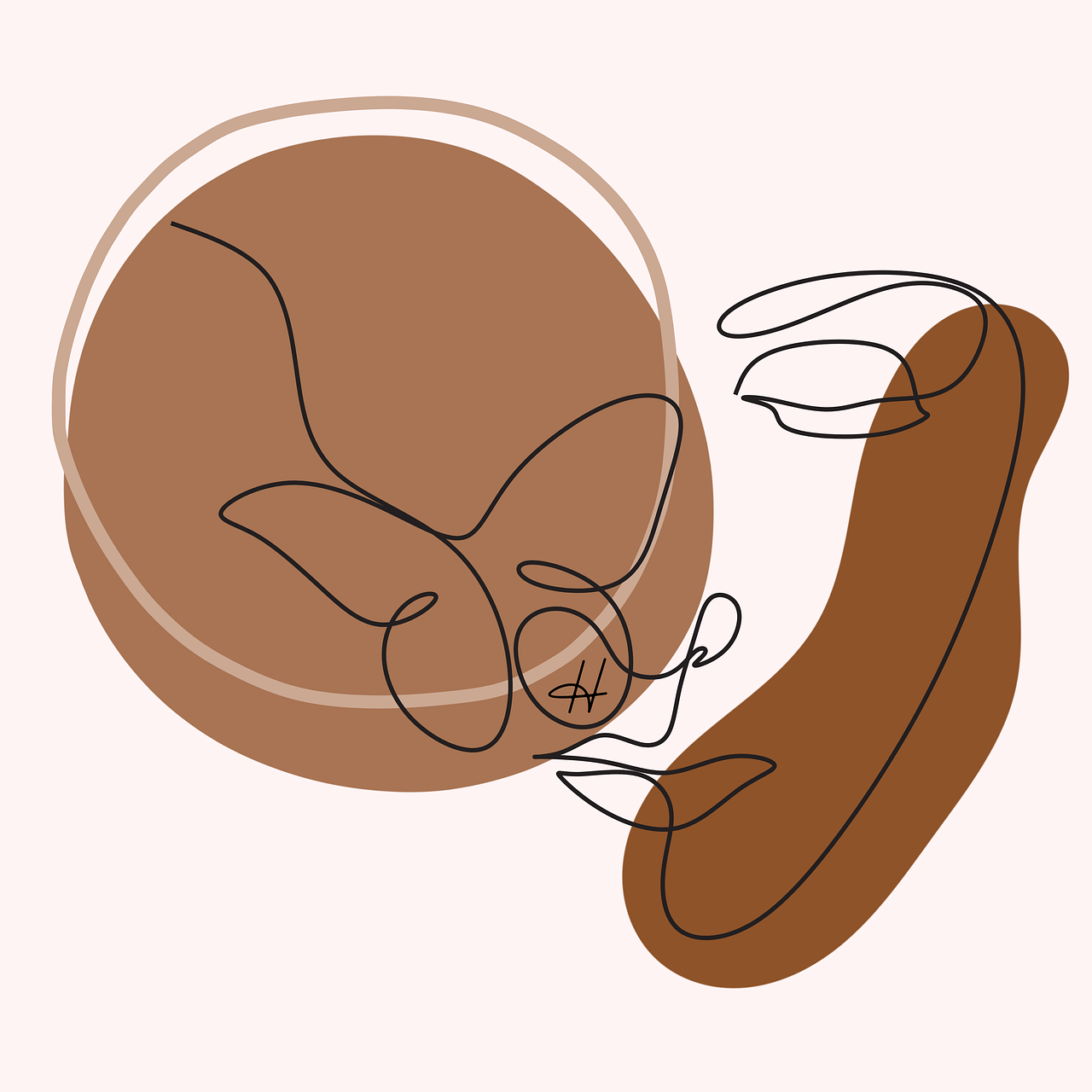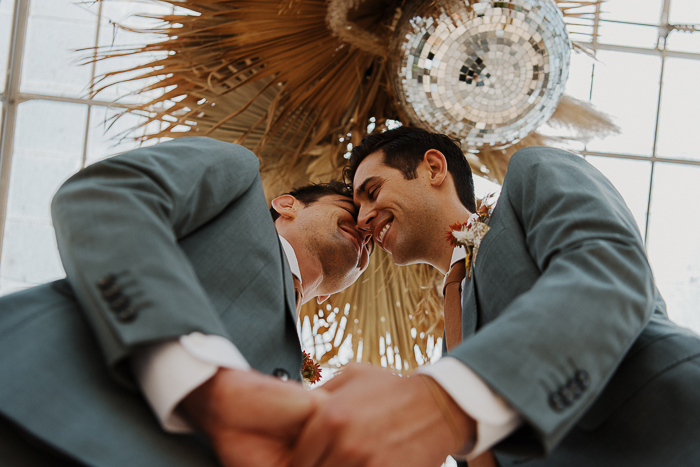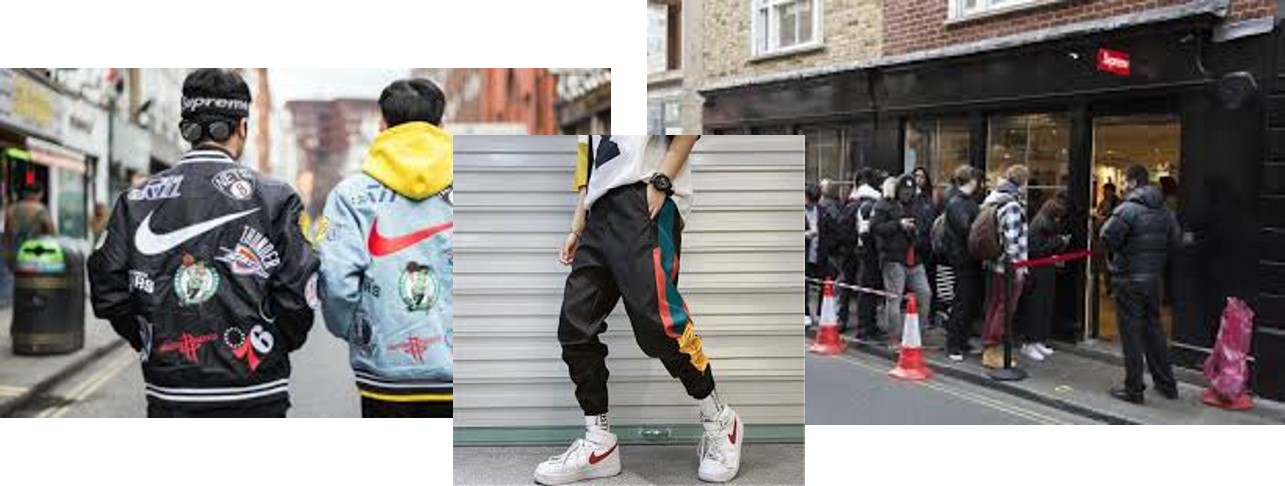Introduction
Fashion has always been a reflection of society’s cultural shifts and counterculture movements. Over the decades, cannabis, once associated with rebellion and counter-establishment sentiment, has made its mark on the world of fashion. From the bohemian styles of the hippie era to its current integration into high fashion, this article explores the evolving relationship between cannabis and counterculture fashion.
Fashion, as a dynamic and ever-evolving art form, has consistently mirrored the changing tides of culture and society. Throughout the decades, cannabis, initially linked to rebellion and counterculture movements, has played a significant role in shaping the world of fashion. This journey through time unveils a fascinating evolution in the relationship between cannabis and counterculture fashion, from the free-spirited bohemian styles of the hippie era to its current integration into the world of high fashion.
The Hippie Era: The 1960s and 1970s marked the zenith of counterculture movements, and cannabis was at the forefront of this cultural revolution. Hippies, seeking an alternative to mainstream values and a connection to nature, embraced cannabis as a sacrament. Their fashion choices were a reflection of this ethos—loose, flowing garments, tie-dye shirts, and an array of natural materials like hemp became staples of the hippie wardrobe. The cannabis leaf symbol, emblazoned on clothing and accessories, served as a potent emblem of their rejection of societal norms and their embrace of a more peaceful and free-spirited lifestyle.
The Underground Scene: As cannabis continued to be associated with rebellion and nonconformity, the underground subcultures of the 1980s and 1990s adopted the plant as an emblem of their anti-establishment sentiment. Punk rockers, in particular, used clothing as a form of protest, often incorporating cannabis imagery into their attire to challenge societal norms. Leather jackets adorned with cannabis patches and DIY aesthetics became synonymous with the punk subculture, exemplifying the enduring connection between cannabis and fashion as a medium of expression.
High Fashion’s Embrace: In recent years, cannabis has transcended its counterculture roots to find a place in the world of high fashion. Designers and brands have recognized the cultural and economic significance of cannabis, leading to collaborations and runway appearances featuring cannabis-inspired designs. Cannabis-themed accessories, clothing, and even luxury cannabis accessories have become sought-after items among fashion-forward individuals. This integration of cannabis into high fashion represents a remarkable shift in how society views and accepts the plant.
The evolving relationship between cannabis and counterculture fashion showcases how fashion can both reflect and influence societal attitudes. From its origins as a symbol of rebellion in the hippie era to its current status as a coveted element in high fashion, cannabis has traversed a complex path through the world of style. It continues to serve as a potent emblem of individuality, nonconformity, and a connection to nature, proving that fashion remains a powerful tool for expressing cultural shifts and the evolving values of society. As the cannabis industry grows and diversifies, it will be intriguing to observe how fashion continues to adapt and reinterpret its role in this ever-evolving narrative.
Looking for more insights? You’ll find them right here in our extended coverage: Dissenting Fashion: Hippie fashion on film in the 1960s and 1970s.
The 1960s counterculture revolution, marked by a rejection of societal norms and a quest for personal freedom, found its sartorial expression in the hippie movement. Cannabis played a prominent role in shaping the fashion of the era.
The 1960s counterculture revolution, characterized by a rejection of mainstream societal norms and a passionate quest for personal freedom, found a vivid and influential sartorial expression in the form of the hippie movement. This cultural upheaval, deeply rooted in the pursuit of love, peace, and communal harmony, extended far beyond mere fashion; it was a way of life that championed alternative values and celebrated individuality. Within this ethos, cannabis emerged as a prominent and transformative force in shaping the fashion of the era.
The Bohemian Aesthetic: The hippie movement rejected the conformity of the 1950s, favoring a Bohemian aesthetic characterized by flowing, loose-fitting clothing, and an earthy color palette. This sartorial rebellion against the rigid clothing norms of the time was, in part, influenced by the relaxed and nonconformist nature of cannabis use. It reflected a desire for comfort and freedom in both attire and lifestyle.
Tie-Dye and Psychedelic Prints: One of the most iconic fashion trends associated with the counterculture era was tie-dye. This vibrant and expressive technique, characterized by bold and swirling patterns, became a canvas for artistic expression and self-identity. It echoed the kaleidoscopic experiences of those exploring altered states of consciousness, often induced by cannabis and other mind-altering substances.
Natural Fabrics and Handcrafted Pieces: Hippie fashion embraced natural, sustainable fabrics such as cotton, hemp, and wool. Handcrafted garments, often adorned with fringes, embroidery, and beadwork, became symbolic of the rejection of mass-produced, consumer-driven fashion. These artisanal creations embodied the counterculture’s values of self-sufficiency and individuality, mirroring the DIY ethos of cannabis cultivation.
Flower Power and Symbols of Peace: Cannabis, with its association with peace and love, became emblematic of the counterculture’s values. The use of cannabis leaf motifs and other symbols of peace and unity adorned clothing, jewelry, and accessories. These symbols were both a declaration of principles and a way for individuals to recognize like-minded souls in a crowd.
Unisex and Gender-Fluid Attire: Hippie fashion was notably unisex and gender-fluid, challenging traditional gender roles and embracing a spirit of equality. The freedom to choose clothing based on comfort and personal expression, rather than societal expectations, became a hallmark of the era.
Legacy in Contemporary Fashion: The influence of 1960s counterculture fashion, shaped in part by cannabis culture, has endured. Elements such as tie-dye, natural fabrics, and bohemian aesthetics continue to inspire contemporary fashion designers and subcultures, reflecting an ongoing appreciation for the values of freedom, individuality, and a connection to nature.
In conclusion, cannabis played a significant role in shaping the fashion of the 1960s counterculture era, helping to define a style that rejected societal norms in favor of personal freedom and expression. This sartorial rebellion, rooted in the values of peace, love, and unity, continues to resonate with subsequent generations, leaving an enduring legacy in both fashion and cultural history.
If you’d like to dive deeper into this subject, there’s more to discover on this page: Hippie | History, Lifestyle, Definition, Clothes, & Beliefs | Britannica

Hippie fashion was characterized by loose-fitting, natural fiber clothing, often adorned with vibrant colors and floral prints. Cannabis leaf motifs and symbols of peace frequently found their way onto clothing, expressing the movement’s ideals of love, peace, and freedom.
Hippie fashion, a hallmark of the counterculture movement of the 1960s, embodied a radical departure from the sartorial norms of its time. It was not merely a mode of dress but a visual expression of a transformative social and cultural shift. At its core, hippie fashion was a rebellion against the constraints of conventionality, embracing freedom, self-expression, and a connection to nature.
One of the most distinctive features of hippie fashion was its preference for loose-fitting, comfortable, and natural fiber clothing. This reflected a rejection of the rigid, structured garments that had dominated previous eras. Instead, the flowing skirts, bell-bottom pants, and loose tunics allowed wearers to move freely, symbolizing the desire for liberation from societal constraints.
Vibrant colors and intricate floral prints were hallmarks of hippie attire. These elements celebrated the beauty of the natural world and echoed the love for nature and environmental consciousness that were central tenets of the movement. The riot of colors and patterns conveyed a sense of joy and positivity, contrasting starkly with the grayscale conformity of mainstream fashion.
Cannabis leaf motifs and symbols of peace were not uncommon embellishments on hippie clothing. The cannabis leaf, in particular, became a potent symbol of the counterculture’s embrace of alternative lifestyles and the pursuit of higher consciousness. It signaled a rejection of the prevailing moral and legal codes that had demonized the plant. In this way, cannabis imagery on clothing was not only a fashion statement but also a political and cultural statement, advocating for the plant’s decriminalization and its role in promoting peace and unity.
Furthermore, symbols of peace, such as the iconic peace sign, were ubiquitous in hippie fashion. This emblem, often worn as jewelry or incorporated into clothing designs, encapsulated the movement’s commitment to nonviolence and its rejection of war and conflict. It served as a visual reminder of the desire for a more harmonious and compassionate world.
Hippie fashion was not just about clothing; it was a holistic expression of a counterculture’s ideals. It challenged the materialistic and conformist values of the mainstream, emphasizing instead a sense of community, love, and individuality. While the era itself may have passed, the legacy of hippie fashion endures as a symbol of a period marked by a profound desire for personal and societal transformation. It serves as a reminder that fashion can be a potent tool for cultural and social change, embodying the spirit of an era and leaving an indelible mark on the collective memory of a generation.
Looking for more insights? You’ll find them right here in our extended coverage: Bohemian Fashion: History and Boho Aesthetics

The counterculture movement encouraged self-expression and authenticity. Many hippies embraced DIY fashion, sewing and tie-dyeing their own garments. This artisanal approach to clothing became a symbol of anti-consumerism.
The counterculture movement encouraged self-expression and authenticity. Many hippies embraced DIY fashion, sewing and tie-dyeing their own garments. This artisanal approach to clothing became a symbol of anti-consumerism.
Rejecting the Mainstream
At the heart of the counterculture movement was a rejection of mainstream values, including consumerism and materialism. Hippies saw the dominant consumer culture as shallow and disconnected from nature and personal values. By creating their own clothing through DIY methods, they not only expressed their unique individuality but also actively resisted the mass-produced, homogenized fashion of the time.
A Canvas for Self-Expression
For many hippies, clothing was a form of artistic expression. They used clothing as a canvas to convey their ideals, beliefs, and affiliations. Tie-dye shirts, for example, were more than just colorful garments; they were wearable art pieces that celebrated peace, love, and unity. Each piece of DIY clothing told a story, representing a personal and communal expression of the counterculture’s values.
Empowering Creativity
DIY fashion empowered individuals to explore their creativity and craftsmanship. Sewing, dyeing, and other crafting techniques became valuable skills that allowed hippies to take control of their wardrobes and reduce their dependence on commercial products. This self-sufficiency was a powerful symbol of autonomy and self-reliance.
An Alternative Economic Model
The DIY fashion movement within the counterculture challenged the traditional economic model. By making their own clothing, hippies reduced their reliance on large corporations and embraced localized, sustainable practices. This shift aligned with the counterculture’s broader goal of creating a more equitable and environmentally conscious society.
A Lasting Legacy
The legacy of DIY fashion in the counterculture extends far beyond the 1960s and ’70s. Today, the principles of DIY fashion continue to resonate with subcultures and movements that value individuality, sustainability, and anti-consumerism. Elements of hippie fashion, such as tie-dye and handcrafted accessories, remain popular, and the spirit of DIY lives on in the form of small-scale, independent clothing brands and craft communities.
A Statement of Values
In retrospect, the counterculture’s embrace of DIY fashion serves as a statement of values that transcends fashion trends. It symbolizes the counterculture’s commitment to authenticity, creative self-expression, and resistance to a consumer-driven society. It reminds us that clothing can be more than a fashion statement; it can be a reflection of one’s beliefs and a means of actively participating in cultural and social change.
Additionally, you can find further information on this topic by visiting this page: ‘Hippie Chic’ Shows at Museum of Fine Arts, Boston – The New York …

In recent years, cannabis-inspired fashion has transcended its subcultural roots, finding a place in high fashion and streetwear.
In recent years, the influence of cannabis on fashion has undergone a remarkable transformation, shedding its subcultural associations and boldly stepping into the spotlight of high fashion and streetwear. This shift reflects not only changing perceptions of cannabis but also the evolving dynamics of the fashion industry itself.
High fashion, once characterized by its exclusivity and traditional aesthetics, is now embracing the cannabis-inspired trend with open arms. Renowned designers and luxury brands are incorporating elements of cannabis culture into their collections, challenging preconceived notions and introducing a new level of sophistication. Cannabis motifs, colors, and textures have found their way onto haute couture runways, blurring the lines between counterculture and couture.
Streetwear, a genre known for its urban roots and rebellious spirit, has naturally become a hotbed for cannabis-inspired fashion. Streetwear brands are collaborating with artists and cannabis companies, creating unique and trendsetting apparel that appeals to a diverse range of consumers. Cannabis-themed clothing, accessories, and sneakers have become staples in streetwear collections, catering to a generation that values self-expression and authenticity.
The evolution of cannabis-inspired fashion goes beyond aesthetics; it reflects a cultural shift. As legalization and destigmatization efforts gain traction worldwide, cannabis is shedding its underground status and emerging as a symbol of lifestyle and wellness. Fashion, being a reflection of culture, is embracing this shift, acknowledging that cannabis is no longer a taboo subject but a mainstream conversation.
What’s most exciting is that this fusion of cannabis and fashion is a two-way street. Just as cannabis is influencing fashion, fashion is, in turn, influencing cannabis. Cannabis packaging and branding are becoming more sophisticated, stylish, and in tune with contemporary aesthetics, making cannabis products more appealing to a broader audience.
In essence, the integration of cannabis-inspired fashion into high fashion and streetwear is a testament to the ever-changing landscape of culture and style. It signals a new era where counterculture meets couture, where self-expression knows no bounds, and where cannabis is celebrated not only for its medicinal and recreational properties but also for its role as a powerful symbol of individuality and creativity in the world of fashion.
For a comprehensive look at this subject, we invite you to read more on this dedicated page: 1960-1969 | Fashion History Timeline

Renowned fashion designers have embraced cannabis-themed collections, collaborating with cannabis brands to create luxury fashion lines. These collaborations have elevated cannabis fashion to the highest echelons of the industry.
The convergence of cannabis and high fashion has given rise to a captivating fusion of style and substance that transcends traditional boundaries. Renowned fashion designers, with their keen eye for aesthetics and innovation, have embarked on a bold journey by embracing cannabis-themed collections. In collaboration with forward-thinking cannabis brands, they’ve embarked on a mission to transform the perception of both cannabis and fashion.
These partnerships have yielded remarkable results, elevating cannabis fashion to the highest echelons of the industry. Designers have drawn inspiration from the vibrant world of cannabis, infusing their creations with a distinct blend of luxury, sophistication, and a touch of countercultural allure.
In these cannabis-themed collections, we see fabrics adorned with intricate cannabis leaf patterns, colors that evoke the lush green of cannabis plants, and accessories that pay homage to the culture surrounding the herb. These pieces speak to a sense of rebellion and individuality while simultaneously embodying the opulence associated with high fashion.
What’s truly groundbreaking about these collaborations is their power to challenge stereotypes and reshape perceptions. Cannabis, once relegated to the fringes of society, is now being celebrated on the runway and in the pages of fashion magazines. This shift in representation underscores the normalization of cannabis as a part of contemporary culture, rather than a subculture.
Furthermore, these cannabis-themed collections often go beyond aesthetics. Some designers have incorporated sustainable and eco-friendly practices into their production processes, aligning with the ethos of the modern cannabis movement. This commitment to sustainability not only appeals to socially conscious consumers but also reflects the broader cultural shift toward environmental responsibility.
As cannabis continues to shed its taboo status and gain legal recognition, the synergy between fashion and cannabis is poised to flourish even further. These collaborations not only inspire creativity in the fashion world but also serve as a testament to the evolving landscape of cannabis acceptance. Together, fashion designers and cannabis brands are weaving a new narrative that embraces the herb’s rich cultural history while simultaneously propelling it into the forefront of modern luxury fashion.
Additionally, you can find further information on this topic by visiting this page: 1960-1969 | Fashion History Timeline

Streetwear brands have adopted cannabis iconography, making it a staple in urban fashion. Cannabis leaf logos and graphics have become trendy, reflecting the plant’s growing acceptance in society.
The intersection of cannabis culture and streetwear fashion has given rise to a fascinating trend in the urban fashion landscape. Streetwear brands have eagerly adopted cannabis iconography, transforming it into a staple of their designs. Today, cannabis leaf logos and graphics have evolved from being mere symbols of counterculture to becoming highly sought-after and trendy motifs, mirroring the plant’s growing acceptance and normalization in society.
At the heart of this fashion movement is a blend of rebellion and acceptance. Streetwear, historically known for its roots in urban youth subcultures and its rejection of mainstream aesthetics, has found common ground with cannabis in its defiance of societal norms. The cannabis leaf, once a symbol of rebellion and counterculture movements, now serves as a visual representation of a more inclusive, open-minded, and progressive society.
Streetwear brands have not only embraced cannabis imagery but have also infused it with their unique styles and aesthetics. Cannabis leaf designs have been integrated into various clothing items, from t-shirts and hoodies to accessories like hats and socks. These pieces are often marked by bold and creative graphics, combining the distinctive shape of the cannabis leaf with streetwear’s characteristic urban edge.
Beyond the aesthetic appeal, the adoption of cannabis iconography in streetwear also reflects the evolving attitudes and laws surrounding cannabis. As more regions and countries move toward legalization and regulation, the stigmatization of cannabis is gradually eroding. Streetwear brands are quick to recognize and embrace this cultural shift, incorporating cannabis symbols not just as fashion statements but as a way to signal support for cannabis reform and a more open dialogue about its use.
The popularity of cannabis-themed streetwear also extends to the broader fashion world. High-profile celebrities and musicians, many of whom are trendsetters in their own right, have been spotted sporting cannabis-inspired streetwear. This celebrity endorsement further solidifies the crossover between cannabis culture and fashion, making it a mainstream phenomenon.
It’s important to note that while cannabis-themed streetwear represents a significant cultural shift, it’s not without its complexities. The commercialization of cannabis imagery raises questions about cultural appropriation, responsible branding, and the potential to trivialize the plant’s rich history and significance.
In conclusion, the infusion of cannabis iconography into streetwear fashion is a testament to the changing landscape of cannabis acceptance in society. The trend serves as a visual reflection of evolving attitudes, not just toward the plant itself but also toward broader issues of counterculture, rebellion, and individuality. As streetwear brands continue to explore this fusion of styles and cultures, they are not only pushing fashion boundaries but also contributing to the ongoing dialogue surrounding cannabis normalization and its place in our modern world.
You can also read more about this here: Representations of Psychoactive Drugs’ Use in Mass Culture and …

Cannabis fashion has also extended to accessories and merchandise.
Cannabis fashion has indeed evolved beyond clothing, branching out into a diverse world of accessories and merchandise. This expansion has not only broadened the options for cannabis enthusiasts to express their passion but also created a unique and booming market that merges style, advocacy, and innovation.
Accessories as Statements: Accessories have become an essential component of cannabis fashion, allowing individuals to make bold statements about their preferences and values. Items like cannabis-themed jewelry, hats, and pins offer subtler ways to display affinity for the plant, making them accessible to a broader range of individuals.
Functional Accessories: Beyond aesthetics, cannabis accessories often serve practical purposes. For instance, specialized storage containers help maintain the freshness and potency of cannabis products, addressing the needs of both recreational users and medical patients. This fusion of function and fashion is a hallmark of modern cannabis merchandise.
Cannabis Merchandise: The cannabis industry has embraced merchandise as a means of promoting brands and creating a sense of community. T-shirts, hoodies, and other apparel featuring cannabis-themed designs or brand logos have become sought-after items among enthusiasts. These pieces often serve as conversation starters and symbols of shared interests.
Inclusivity and Representation: The expanding world of cannabis fashion has also fostered inclusivity and representation. Designers are increasingly mindful of creating products that cater to a diverse audience, ensuring that everyone can find accessories and merchandise that resonate with their unique identities and preferences.
Advocacy and Messaging: Many cannabis accessories and merchandise items carry messages of advocacy and reform. They might feature slogans promoting responsible use, advocating for legalization, or challenging the stigma associated with cannabis. In this way, cannabis fashion becomes a form of activism, raising awareness and sparking important conversations.
Innovation and Technology: The cannabis fashion industry is not just about aesthetics; it’s also embracing innovation and technology. Wearable tech accessories that monitor cannabis consumption, dosage, or even analyze the composition of cannabis products are emerging, reflecting the integration of science and fashion in this space.
Sustainability: The fashion world, including cannabis fashion, is increasingly focusing on sustainability. Many cannabis accessory brands are committed to eco-friendly materials, ethical production practices, and reducing their environmental footprint, aligning with the broader trend of conscious consumerism.
In conclusion, cannabis fashion has expanded far beyond clothing, encompassing a wide range of accessories and merchandise. This evolution mirrors the broader acceptance and normalization of cannabis in society. These accessories not only serve as stylish additions to one’s wardrobe but also convey personal values, promote advocacy, and cater to the diverse tastes and needs of the growing cannabis community.
For a comprehensive look at this subject, we invite you to read more on this dedicated page: 1960-1969 | Fashion History Timeline

Cannabis-themed jewelry, including necklaces, rings, and earrings, often featuring miniature cannabis leaves or paraphernalia, has gained popularity as a symbol of cannabis culture.
Cannabis-themed jewelry has emerged as more than just adornments; it has become a powerful symbol of cannabis culture, carrying deep meaning and significance for those who wear it. These pieces of jewelry, which can take the form of necklaces, rings, earrings, and more, offer a unique and stylish way for individuals to express their connection to cannabis and the values associated with it.
One of the most captivating aspects of cannabis-themed jewelry is its versatility. It allows people to subtly or boldly showcase their affinity for cannabis culture, depending on the design and size of the piece. Some may opt for discreet, minimalist designs that incorporate subtle cannabis leaf motifs, while others may boldly display their passion with more elaborate and eye-catching jewelry that features intricate details and cannabis paraphernalia.
Beyond aesthetics, cannabis-themed jewelry holds a deeper meaning for many wearers. For some, it serves as a statement of identity and belonging within the cannabis community. It signifies a shared understanding of the plant’s potential for healing, creativity, and relaxation, as well as its historical and cultural significance. Wearing such jewelry can foster a sense of camaraderie and connection with like-minded individuals who appreciate cannabis not just as a substance but as a part of their lifestyle and values.
Cannabis-themed jewelry also plays a role in sparking conversations and breaking down stigmas. When worn proudly, these pieces can serve as conversation starters, allowing individuals to share their perspectives on cannabis with others and perhaps challenge preconceived notions. This open dialogue can contribute to greater acceptance and understanding of cannabis, ultimately shaping the broader cultural narrative.
Furthermore, the rise of cannabis-themed jewelry underscores the plant’s integration into mainstream culture. It’s a reflection of how cannabis has transcended its historical associations and become a symbol of personal choice, self-expression, and even advocacy. This shift in perception is evident in the growing number of jewelry designers and artisans who create these unique pieces, catering to a diverse audience that includes both cannabis enthusiasts and those with a more casual interest in the plant.
In conclusion, cannabis-themed jewelry is more than just a fashion statement; it’s a tangible expression of the evolving attitudes towards cannabis. It signifies a sense of community, identity, and pride among those who appreciate the plant’s multifaceted nature. As cannabis continues to shape modern culture and art, these pieces of jewelry stand as both an emblem of the movement and a testament to the enduring appeal and symbolism of cannabis in today’s world.
Explore this link for a more extensive examination of the topic: Green Goddess Weed – Etsy

T-shirts, hats, and other apparel adorned with cannabis designs are widely available, allowing enthusiasts to express their passion for the plant through fashion.
T-shirts, hats, and other apparel adorned with cannabis designs are widely available, allowing enthusiasts to express their passion for the plant through fashion. This trend not only represents a growing cultural acceptance of cannabis but also serves as a testament to the evolving perceptions surrounding it.
Fashion as a Statement: Beyond being mere clothing items, these cannabis-themed garments have become a medium for individuals to make a statement. They showcase a shift in how society views cannabis, from taboo to mainstream, promoting conversations around its potential benefits and responsible use.
Artistic Expression: Cannabis-themed apparel often incorporates intricate and creative designs, turning clothing into a canvas for artistic expression. These designs can range from subtle and elegant to bold and vibrant, appealing to a wide spectrum of tastes and preferences.
Community Building: Wearing cannabis-themed apparel can foster a sense of community among like-minded individuals. It can act as a conversation starter, bringing together people who share an interest in cannabis culture, advocacy, or legalization efforts.
Breaking Stereotypes: By wearing cannabis-related clothing, enthusiasts challenge the outdated stereotypes associated with cannabis consumers. They demonstrate that cannabis enthusiasts come from all walks of life, breaking down stereotypes and misconceptions.
Supporting the Industry: Purchasing such apparel not only allows enthusiasts to express their passion but also supports the growing cannabis industry. Many of these products are produced by cannabis-related businesses, contributing to the industry’s expansion and development.
Advocacy Through Fashion: Some cannabis-themed apparel carries deeper messages, advocating for issues such as legalization, medical cannabis access, or social justice reforms. By wearing these items, individuals can lend their voices to these important causes.
Changing Norms: The availability of cannabis-themed fashion represents a broader shift in societal norms and values. It reflects the changing attitudes toward cannabis, which is now viewed by many as a legitimate and valuable part of society.
In conclusion, cannabis-themed apparel serves as a unique and multifaceted means of expressing one’s connection to cannabis culture while simultaneously contributing to the normalization and acceptance of cannabis in society. It’s more than just clothing; it’s a symbol of evolving perspectives and a conversation starter in the ongoing dialogue surrounding cannabis.
You can also read more about this here: Counter Culture Tee – Etsy

Cannabis has transcended its countercultural origins to become a symbol of rebellion, personal freedom, and self-expression in fashion. From the bohemian styles of the 1960s to its current integration into high fashion and streetwear, the cannabis leaf has become an enduring emblem of counter-establishment sentiment. As cannabis legalization and acceptance continue to spread, its presence in the world of fashion is a testament to its lasting impact on culture and style.
Cannabis has indeed journeyed far beyond its countercultural origins, evolving into a powerful symbol of rebellion, personal freedom, and self-expression within the world of fashion. This transformation is a fascinating reflection of the plant’s ability to transcend its initial associations and take on new meaning in different eras.
In the 1960s, during the height of counterculture movements, cannabis became synonymous with the bohemian fashion styles of the time. Tie-dye shirts, bell-bottom pants, and colorful, flowing fabrics adorned with cannabis leaf motifs became iconic symbols of a generation challenging societal norms. These clothing choices were a form of nonconformity, signaling a rejection of mainstream values and an embrace of a more liberated and expressive way of life.
Fast forward to today, and cannabis has seamlessly integrated into the realms of high fashion and streetwear. Luxury brands have adopted the cannabis leaf as a motif, incorporating it into their designs in innovative and unexpected ways. Streetwear brands, too, have embraced the plant’s imagery, using it as a symbol of subversion and individualism.
The enduring presence of the cannabis leaf in fashion serves as a testament to its lasting impact on culture and style. It embodies the spirit of defiance and the quest for personal freedom that has characterized cannabis culture throughout the decades. It’s not just a symbol of a particular subculture; it’s a reflection of society’s evolving relationship with cannabis itself.
As cannabis legalization and acceptance continue to gain momentum globally, we can expect to see even more creative and diverse interpretations of this iconic leaf in the world of fashion. It’s a symbol that not only represents the past but also evolves with the times, mirroring the ever-changing landscape of cannabis culture and its influence on society’s perception of style, rebellion, and self-expression.
To delve further into this matter, we encourage you to check out the additional resources provided here: The Radicalization of Joan Didion | The New Yorker
More links
Don’t stop here; you can continue your exploration by following this link for more details: 1960-1969 | Fashion History Timeline
